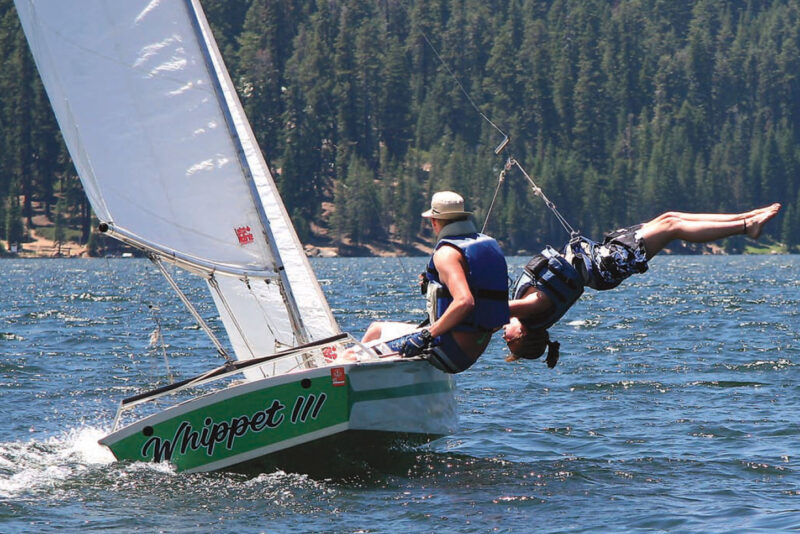 George Cardas
George CardasWith excitement and speed the primary objectives, athletic sailing abilities will pay off in the Geary 18, just as in other racing dinghies fitted out with trapeze gear.
Afew years ago, I was puttering on the docks at The Center for Wooden Boats in Seattle, Washington, when a fellow member of the Center asked if I would like to go out in the Flattie, the original and apt nickname of the one-design sloop officially known as the Geary 18. It was a warm summer afternoon, and the wind engine on Lake Union was running at a good 15 knots, so of course I said yes.
As I walked down the docks, one of the Center’s inveterate sailors looked at my shorts and said, “I hope you’re ready to get wet.”
Moments later, I was holding a jibsheet like a stallion’s rein as we peeled the boat on to a broad reach. The boat leapt from jog to gallop, the centerboard took to humming like a cyclotron, and a solid spray turned me into a human dodger. I’m sure I’ve gone faster on a sailboat before or since, but nothing felt as fast as this. And while there are certainly faster dinghies out there, few match the history and simplicity of the Geary 18.
The boat is the diminutive brainchild of L.E. “Ted” Geary, the talented and prolific Seattle-bred naval architect whose résumé includes far bigger Prohibition-era rum chasers, the first diesel-powered tugboat in the United States, actor John Barrymore’s 120′ fantail cruiser, and PIRATE (WoodenBoat No. 192), the R-boat, now based at the Center, that became the first West Coast designed and -built boat to compete in an East Coast yacht race. The race just happened to be the national championship, and it won.
Geary turned out the design for the Flattie just two years after PIRATE was built, aiming to produce a safe sailtrainer “that anyone with little or no boating experience can build and race.” It started out at the Seattle Yacht Club, whose junior members were looking for a fast but safe class boat. Fleets soon appeared in Vancouver, British Columbia, and Oregon, and Geary himself introduced the boat to Lake Arrowhead, California, and Acapulco, Mexico. In 1938, it was named the official boat of the Sea Scouts. Writing about Geary’s oeuvre in WoodenBoat No. 138, Thomas G. Skahill said, “the Geary 18 is a fine manifestation of Ted Geary’s basic tenet of simplicity, practicality, and longevity.”
More than 1,500 boats have been built over the past eight decades, with many sailed hard in fleets scattered around the West. Until even recently, a dedicated racer with a four-cylinder car, a trailer, and yen for adventure could tow a 525-lb Geary 18 to regattas from Mission Bay, San Diego, to Vancouver, Washington. Trailer oriented competition now focuses largely on the Coos Bay Yacht Club in Lakeside, Oregon, says Deb Eckrote, executive secretary of the Geary 18 International Yacht Racing Association and a third-generation Geary sailor.
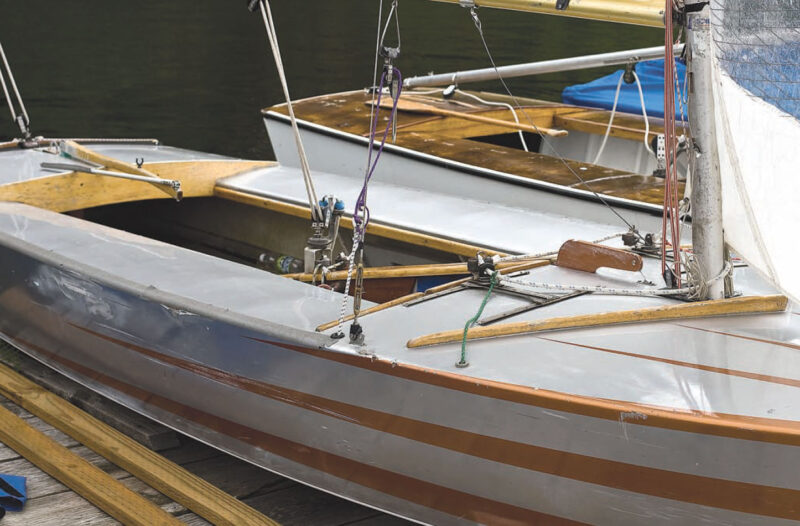 George Cardas
George CardasSince its beginnings in the late 1930s, the Geary 18 has introduced many sailors to dinghy racing with a rig and fittings meant to be simple and comparatively inexpensive.
One of the largest fleets is just around the corner from the boat’s birthplace, on the western shore of Lake Washington in the well-to-do neighborhood of Laurelhurst. Microsoft co-founder Bill Gates learned to swim there at the Laurelhurst Beach Club, but the club’s more enduring claim to fame is a long-running tradition of campaigning Geary 18s. As one veteran used to say, “the kids in Laurelhurst grew up in the Flattie fleet rather than the Boy Scouts.”
On any Monday night in summer, you can find as many as 20 Flatties out racing, all by Laurelhurst Beach Club members, says Charlie Hanson, a second-generation LBC racer. In the ’60s and ’70s, some club owners would have as many as three boats at one time. “People would hoard boats,” says Hanson.
Hanson’s own boat is SMALL KRAFT III, built in 1961 of plywood on oak stems. Hanson’s father, Pete, bought it in the early ’70s from Ken Kraft, one of the top Geary 18 sailors in the West, and routinely sailed across the lake to Kirkland and back. He taught Charlie by example, even when it came to displaying the legendary ease with which the boat will capsize.
“He didn’t tell me that was how it was going to go down,” Hanson recalls, “but that’s how you learn.”
While Hanson was off to college, the boat fell off the dock and was smashed against a breakwater. He continued with college, married, had three kids, lived in Idaho, then returned to find the boat in a carport where he had put it 18 years earlier. He had Steve Evavold, a local boatwright now at Jensen Motor Boat, rebuild the boat. “Now I’m taking my kids,” says Hanson. “I’ve capsized with them, too.”
Of course, the class has seen better days. The international association is down to about 50 dues-paying members. Hanson figures the heyday was the ’40s and ’50s. The ’60s and ’70s saw the arrival of fiberglass and other composites and more competitive boats like Lasers.
It was time for a change, says Eckrote. “If they didn’t do something with the class, it was going to die out.”
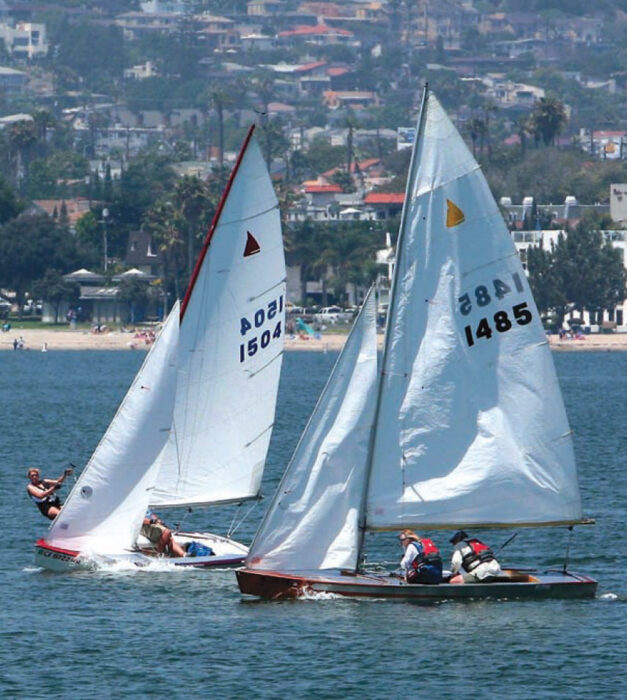 George Cardas
George CardasRacing is the central purpose for the Geary 18, and races are held annually from California to British Columbia.
The 18’s sail area was increased, from about 160 to 200 sq ft between the jib and main, and the centerboard was made smaller, making the boat more maneuverable. The increased sail area necessitated the introduction of a trapeze, giving racers the heart-in-the-throat thrill of hovering supine over the water as the boat gets up on a plane.
The class has its devotees, says Hanson and others, for several reasons. Hanson says the Geary 18 offers “the greatest amount of fun for the boat.”
Someone “in the first half of talent as far as building boats”—meaning a beginner to someone with a fair amount of experience—can handle its construction, Hanson says. The original design calls for cedar planks, one piece on the side and cross-planked on the bottom, but later versions take advantage of marine plywood. It has few frames and, with a hard chine, no compound curves to wrestle with.
A good sailor can singlehand the boat. Hanson compares it to sailing while sitting on a couch. “You can very easily have a beer on your lap, chat about oil prices, and be racing very comfortably,” he says.
The lack of a spinnaker further reduces the need for crew and the hassle of dousing a massive wall of canvas while rounding a mark. In general, the boat’s simplicity reduces the arms race that makes racing larger craft an exercise in high finance.
Geary meant it that way, says Ken Kraft in an oral history posted on the Laurelhurst website. A new rule for a different jib may make the boat sail better, but it also means everyone has to buy a new jib. Kraft said he once heard Geary himself remark that “he knew 20 ways to make it faster, but he wouldn’t recommend any of them.”
As a minimalist racer, Hanson says, the boat reduces competition “to seamanship and talent.” Be at the right place on the course at the right time. Hit the start just right. Watch your trim.
On the downside, he acknowledges, “it is a wet boat.” The helmsman, he says, stays about 90 percent dry. But a dearth of freeboard brings a certain, uh, “intimacy” with the water. For the crew, sitting farther forward in the bow wave’s way, that means getting drenched.
But this is a late spring and summer boat. In the Pacific Northwest, that means light air and a dry sail. Such was the case this May when John Watkins, an experienced racer, took me out on The Center for Wooden Boats’s Geary 18 for a spin in the Duck Dodge, the classic Tuesday night pickup race on Lake Union. The boat was on the backside of its maintenance cycle, with antique sails and a furry bottom, but it leapt to life with little prompting. “Not bad for a boat from 1928,” Watkins said.
On the downwind leg, chasing pockets of wind past the Sleepless in Seattle houseboat, the Flattie found itself in a duel with a composite-sailed Tasar and managed to
stay ahead to the end.
And as noted earlier, in heavier air, it’s a wild sail. With crew out on a trapeze and enough wind, Hanson says, the boat will plane going to weather. But it’s best on a broad reach, planing at about 15 knots. That basically means that, if there are whitecaps, you’re flying. Hanson has a way of doing that formula one better, bringing his boat along Seattle’s Evergreen Point Floating Bridge, which can have a mile of flat water in its lee in spite of marvelously big wind. “You can go out there in 20 knots,” says Hanson, “and you feel like you’ve died and gone to heaven.”
Plans for the Geary 18 are available from the Geary International Yacht Racing Association, P.O. Box 4763, Federal Way, WA 98063 4763. The plans, at $20, are only available to people who register for association membership for at least one year at $40.
Geary 18 Particulars
LOA 18′
Beam 5′ 3″
Sail area 168 sq ft
Weight 525 lbs (minimum)
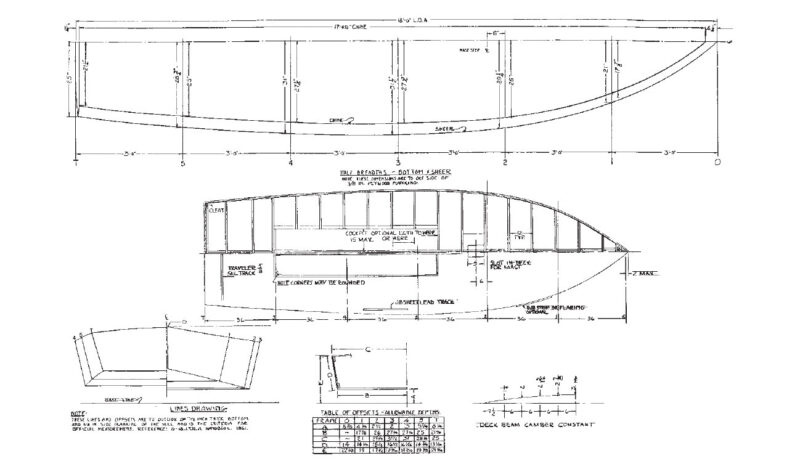 L.E. "Ted" Geary/Geary International Yacht Racing Association
L.E. "Ted" Geary/Geary International Yacht Racing AssociationThe reason for the Geary 18’s nickname—the “Flattie”—certainly is evident in her plans.
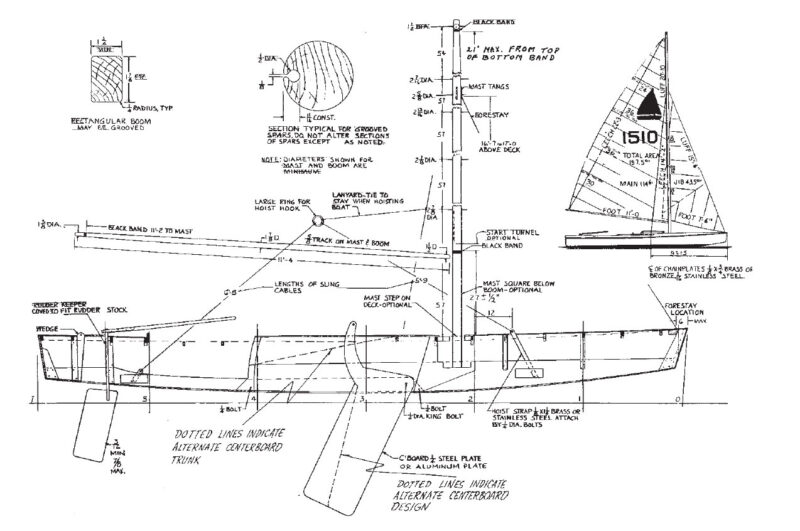 L.E. "Ted" Geary/Geary International Yacht Racing Association
L.E. "Ted" Geary/Geary International Yacht Racing AssociationThe hull construction is straightforward plywood boatbuilding emphasizing sailing performance and simple, inexpensive construction. The plans are accompanied by a detailed instruction booklet.
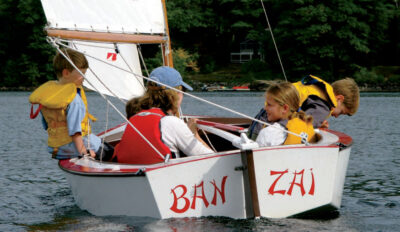
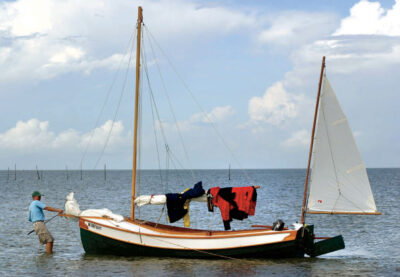
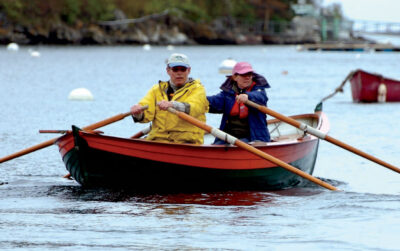
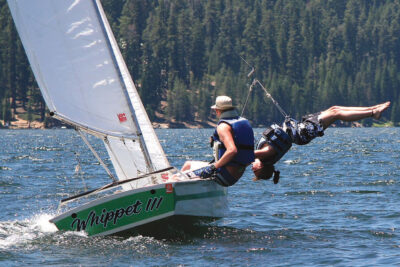
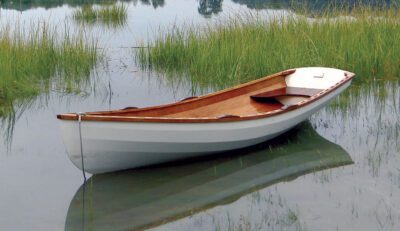
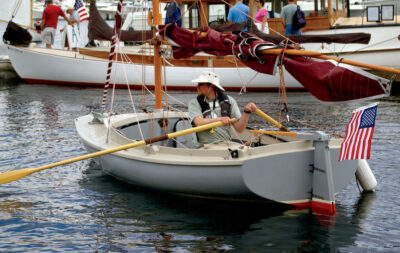
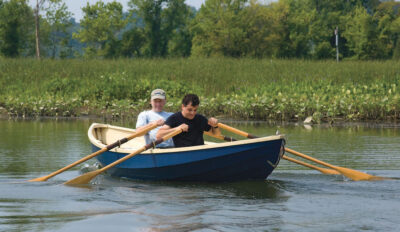
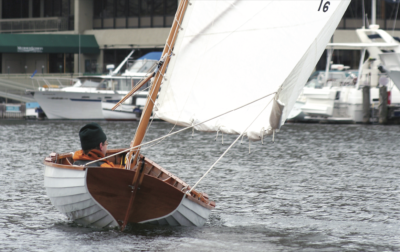
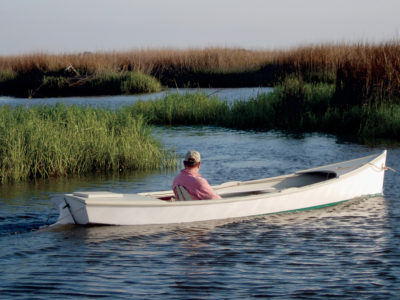
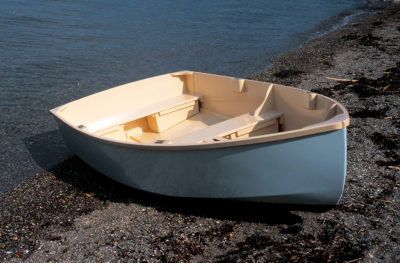
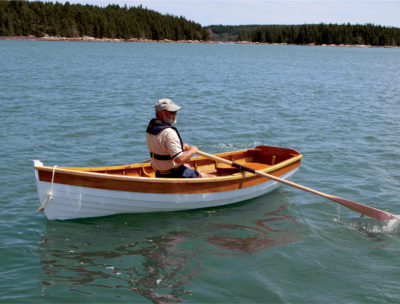
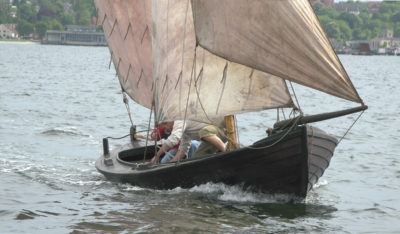
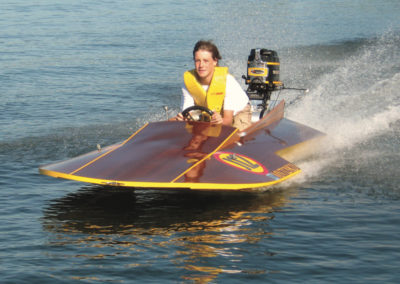
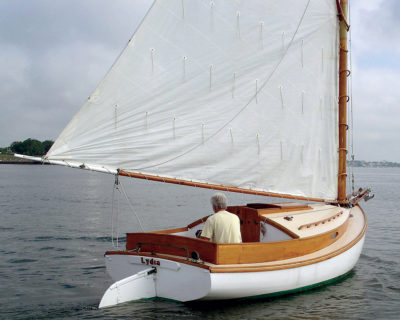
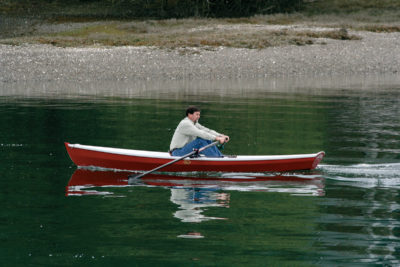
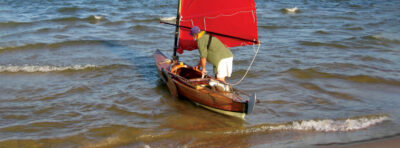
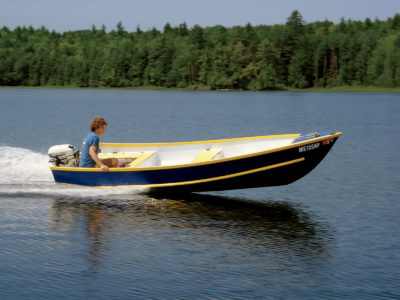
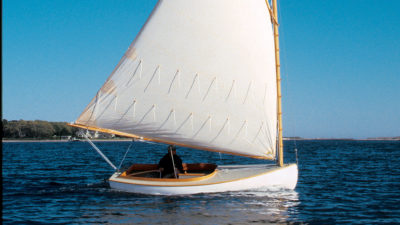
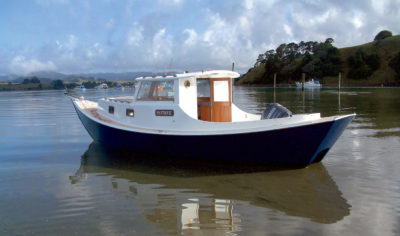
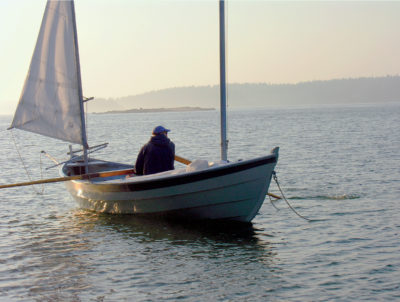
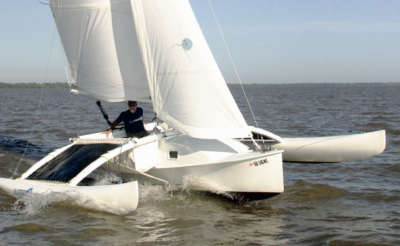
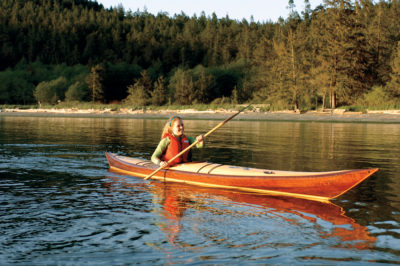
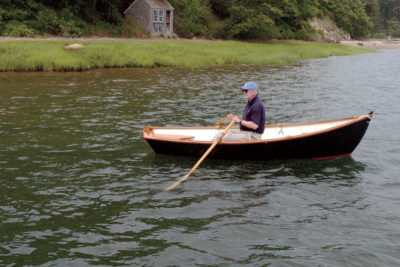
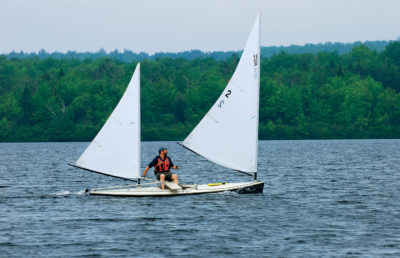
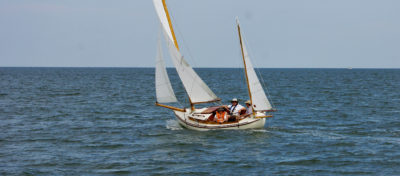


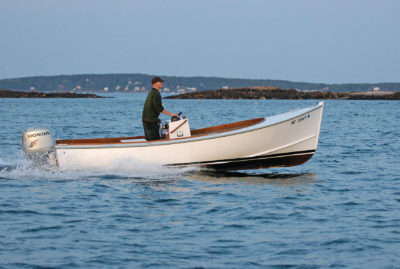
Back in the 1960/70 era there was an attempt to introduce the gearys to the Great South Bay of Long Island NY.. They were cute but came up against the indigenous designed and built Narrasketuck.. 21 feet, broader of beam, also wet but when a “tuck” got up on a plane it sounded like a freight train coming through.. The gearys didn’t stand a chance…
A member of the Coos Bay YC also sails on my local lake (Fern Ridge Reservoir). He says there are still 5 or 6 active Flatties racing on Tenmile Lakes: https://www.coosbayyachtclub.org/
The Laurelhurst Beach Club on Lake Washington still has a fleet of Flatties: https://laurelhurstbeachclub.com/#/activites/
There are a couple in the livery of the Center for Wooden Boats in Seattle. Probably rigged to the old rules, since my source says they send inexperienced sailors out in them.
There used to be a bunch of Flatties on Fern Ridge, but it’s been years since I’ve seen even one. That was a fiberglass one sailed by a couple of young fellows. But one of our boating group is restoring a wooden Flattie, so I hope we see theirs on the lake soon.
The original plans by Ted Geary are in Edwin Monk’s book, How to Build Wooden Boats, which is available as an inexpensive Dover reprint, or an ebook: https://store.doverpublications.com/search?type=product&q=edwin+monk
It’s a shame when a class of cheap, fast, and fun boats fades away. What do the newer classes offer that the Flattie doesn’t?
I sailed Ted LaCourse’s Geary 18 on Lake Sammamish every summer in high school, 1963 to 1965, with my buddy Steve LaCourse. We were fearless on a broad reach, riding on the windward planking as long as the mast did not go past horizontal. When we were younger, sleeping aboard overnight was an adventure. It was a great training boat. Always safe. And it taught us how to sail, and how to sail better. Everyone should have the use of one.